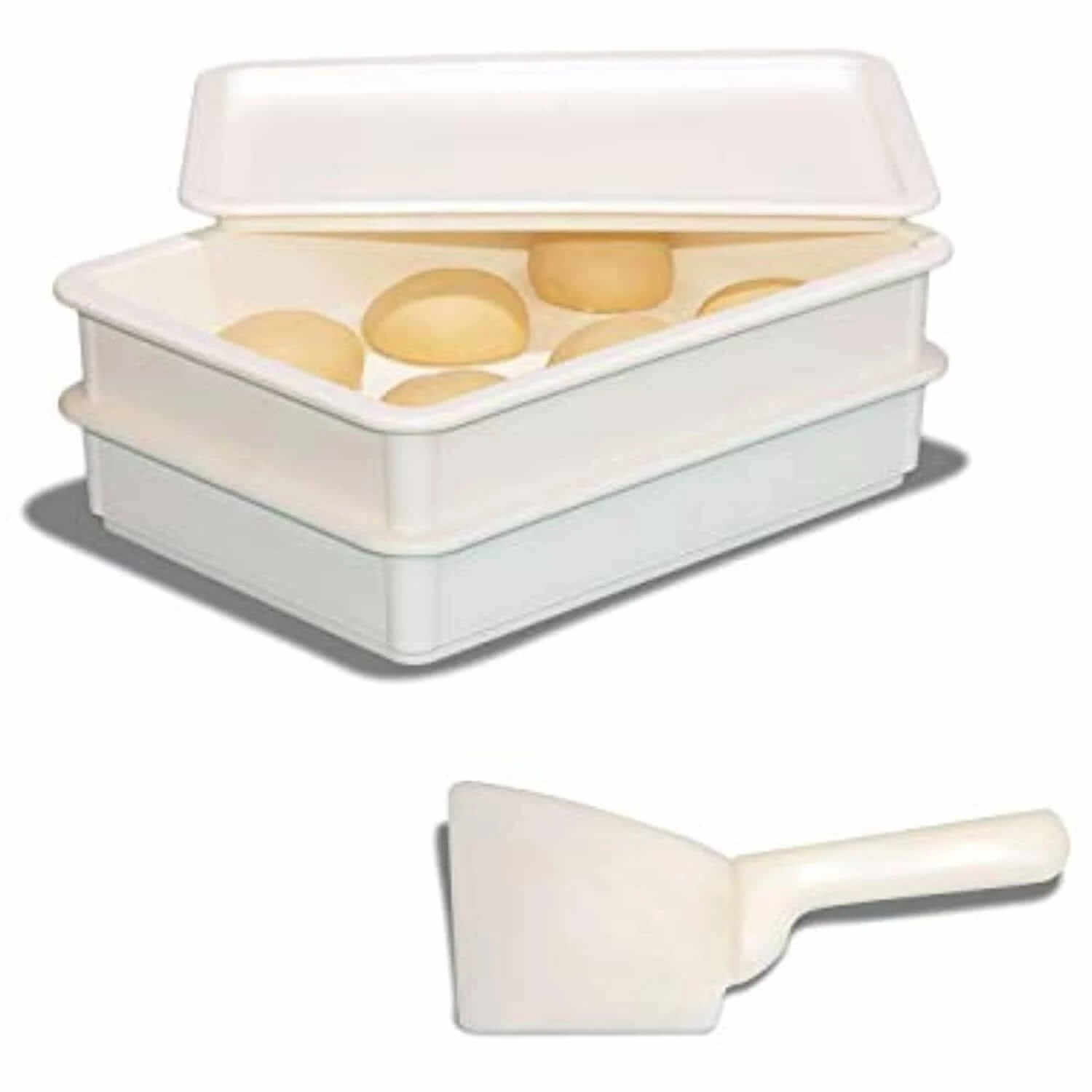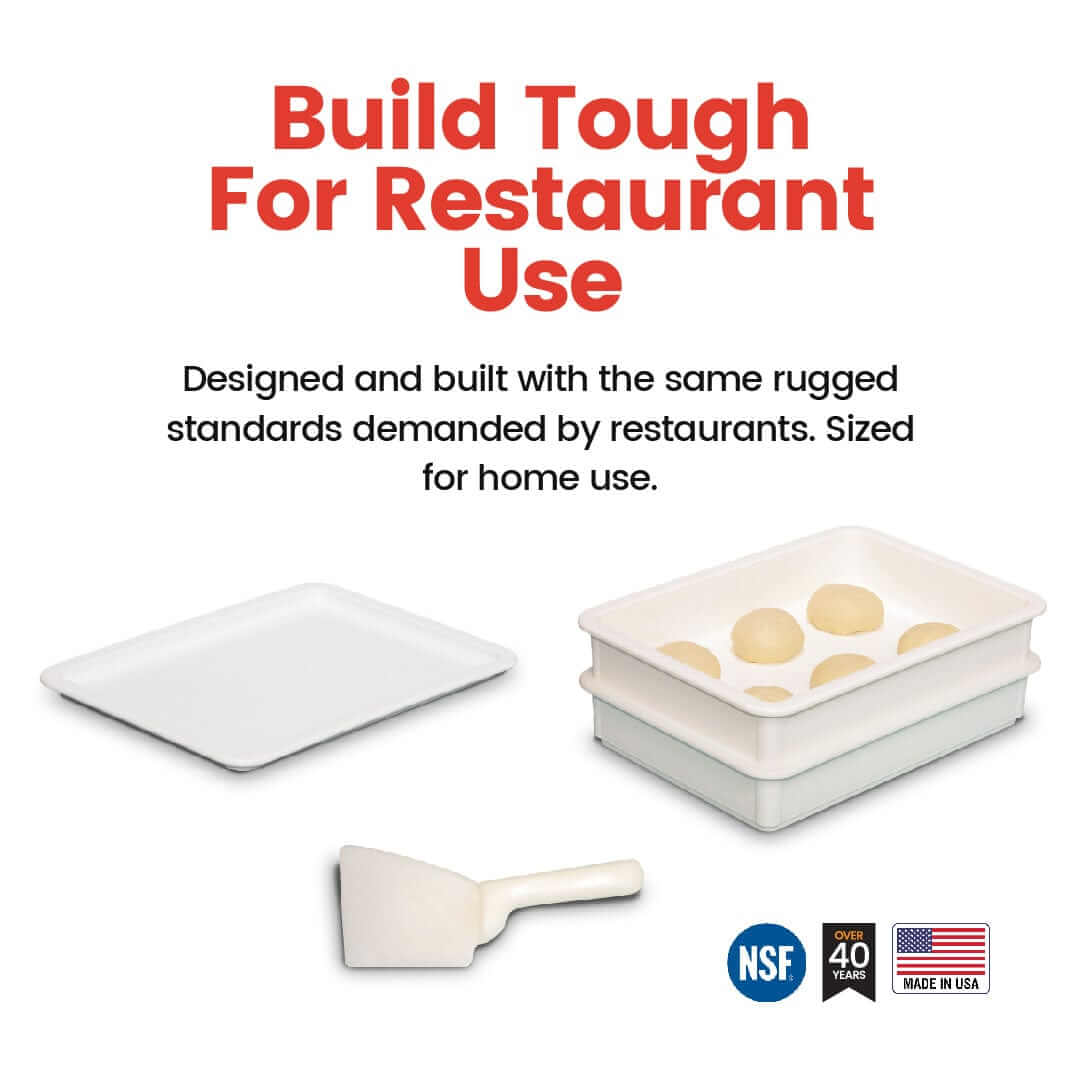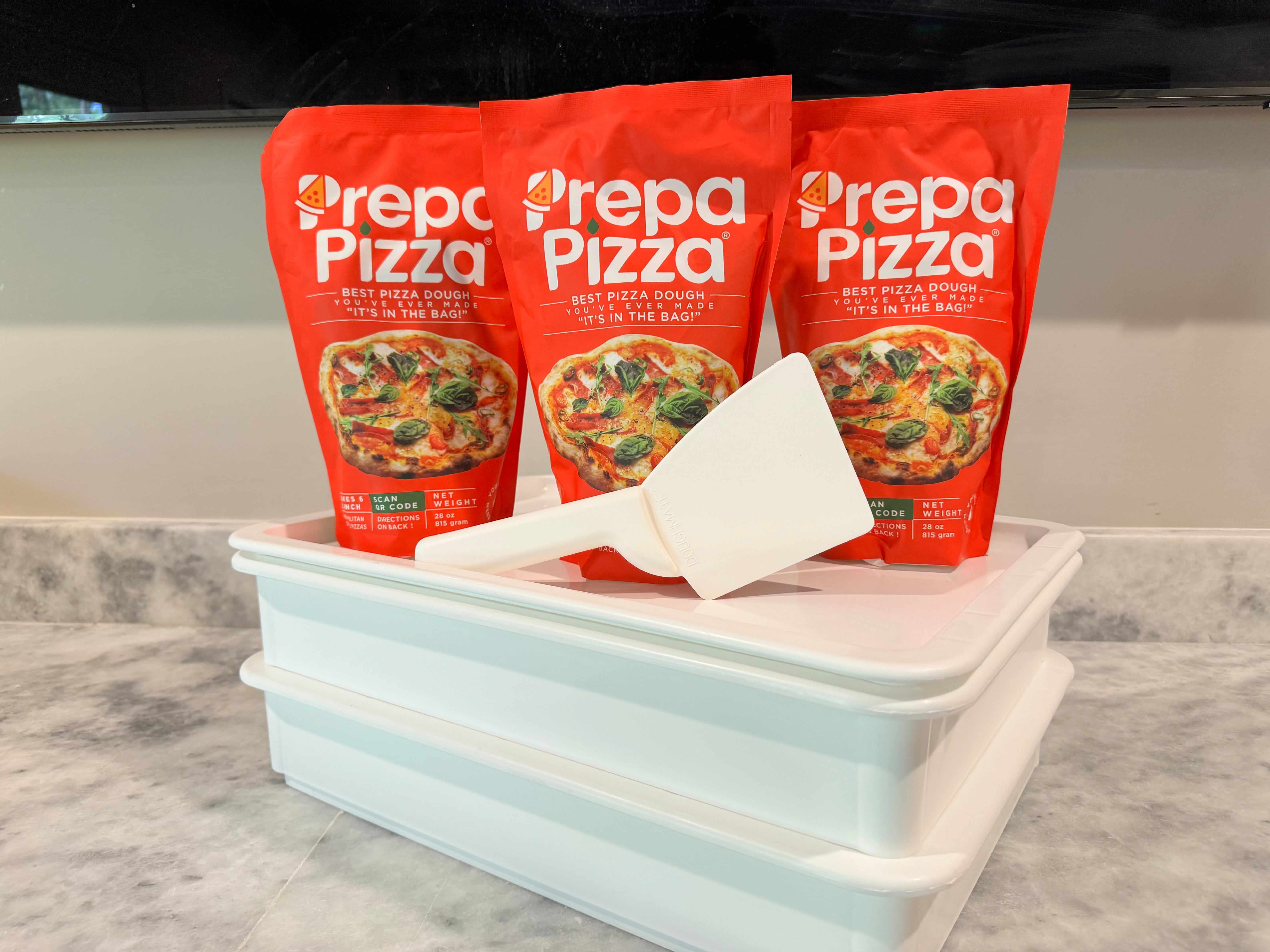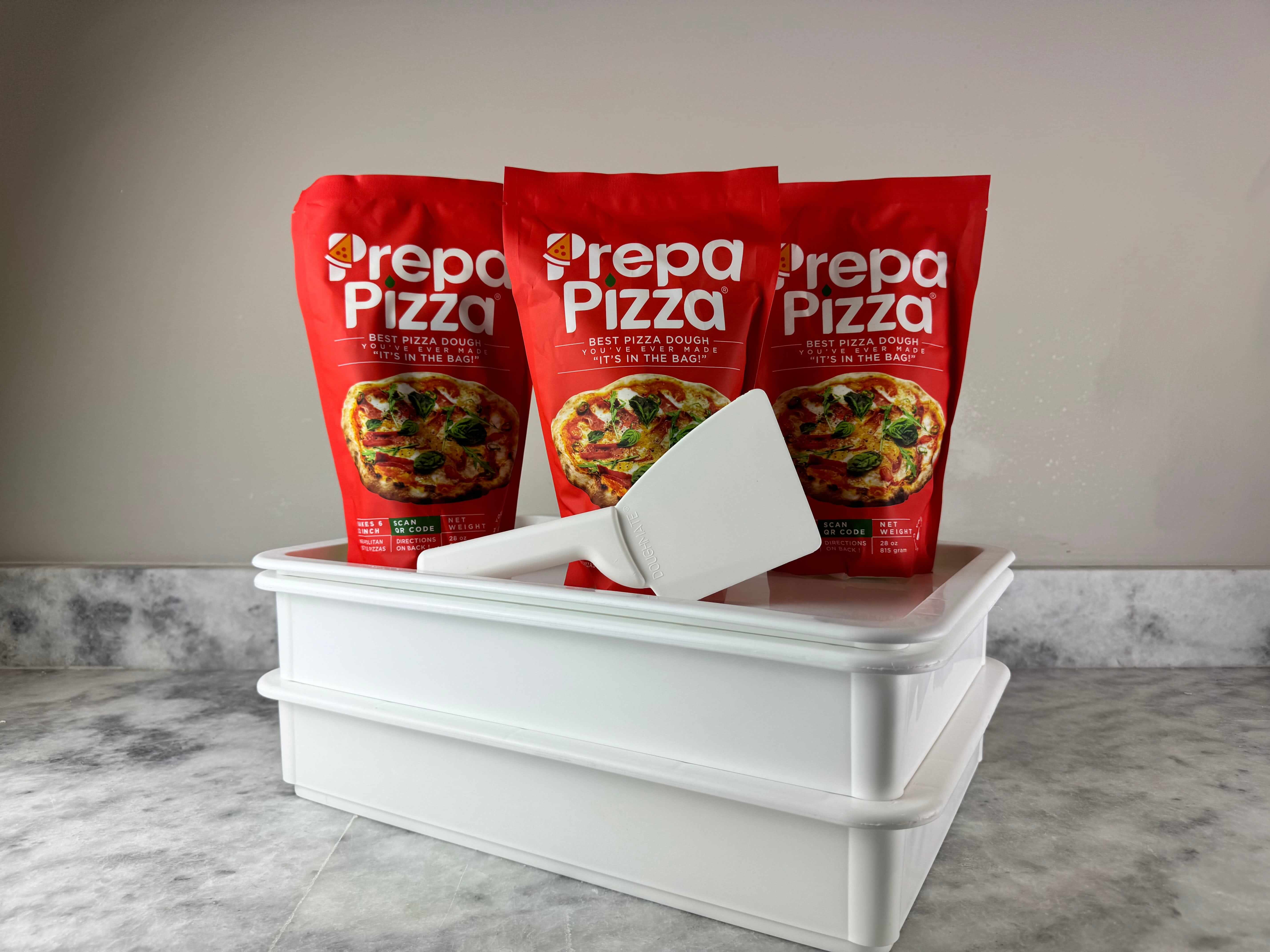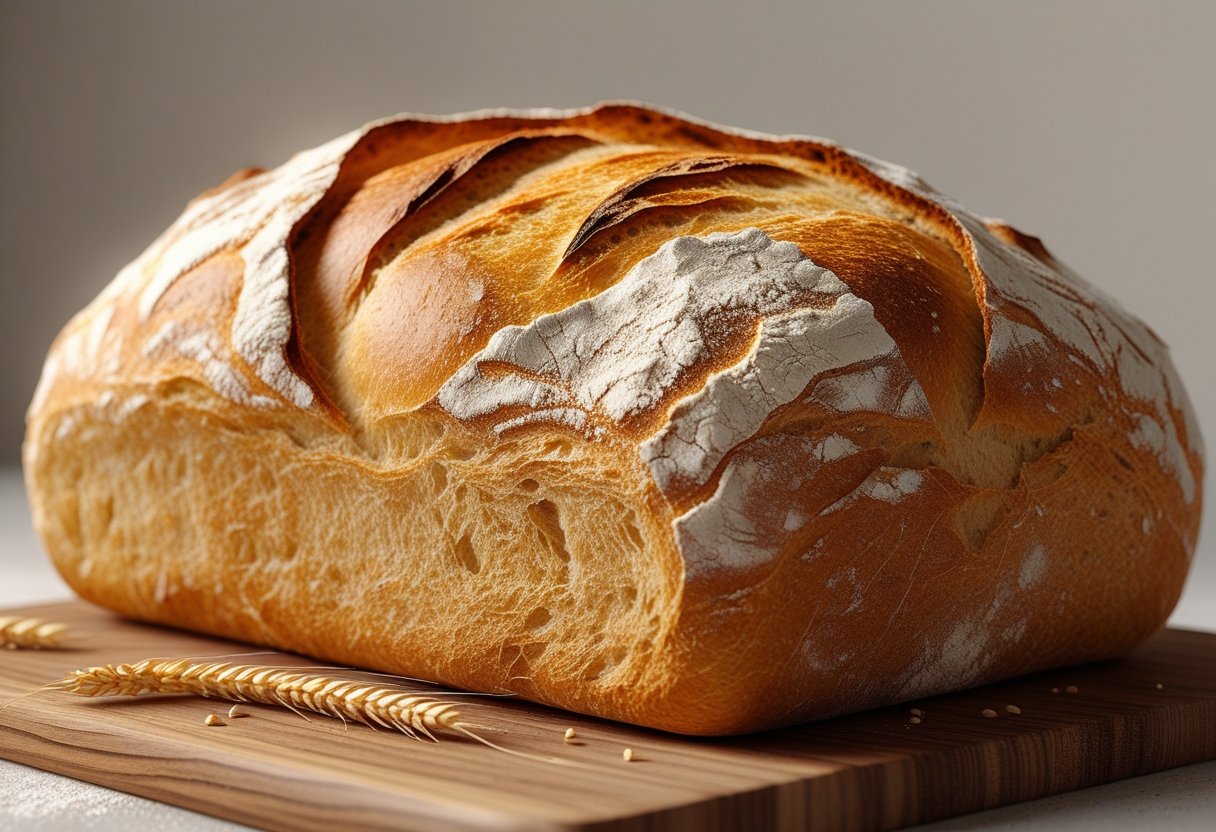
Bread Flour Crust Techniques for Perfectly Crispy Baked Goods
If you’re wondering whether bread flour is a good choice for your pie crust, the answer depends on the texture you want. Bread flour’s higher protein content creates a chewier, sturdier crust compared to all-purpose flour, but with the right technique, you can still achieve a deliciously flaky result. Using premium ingredients and reliable dough can help you get the best possible outcome every time.
For convenience and consistency, Prepa Pizza offers premade pizza dough made with restaurant-quality ingredients that suit both pizzas and crust-based recipes. You can find their high-quality dough kit here to save time without sacrificing texture or flavor in your crust. With the right dough in hand, adapting your process for bread flour becomes much simpler.
By understanding how bread flour behaves and pairing it with top-tier dough from Prepa Pizza, you can take your baking to the next level. This guide will walk you through what to expect and how to make it work well for your crust needs.
What Is Bread Flour Crust?
A bread flour crust is defined by its unique structure and texture, influenced by the type of flour used. The flour’s protein level directly affects the dough’s elasticity and chewiness, impacting how your crust turns out. Understanding the differences between bread flour and other flours helps you decide whether it suits your baking goals.
If you're using premade dough like Prepa Pizza's, which is crafted with high-quality ingredients for restaurant-level results, knowing the flour content and its effects can improve your pie or pizza crust experience. You can check out Prepa Pizza's premium premade dough here.
Defining Bread Flour and Its Characteristics
Bread flour is a type of wheat flour known for its higher protein content compared to typical all-purpose flour. This flour generally contains 12-14% protein, which provides the building blocks for developing gluten. Its texture is slightly coarser than softer flours like pastry or cake flour.
Because of its protein level, bread flour is primarily used for yeast breads and doughs where strong gluten networks are essential. When working with bread flour for your crust, it yields a chewier and more structured bite, which may differ from the flakiness typical of other crusts.
High Protein Content and Gluten Development
The key feature of bread flour is the elevated protein content, which directly translates into more gluten formation during mixing and kneading. Gluten proteins form a stretchy network that traps gas during fermentation, helping dough rise and hold its shape.
In a crust, this gluten development leads to increased elasticity and chewiness. If you prefer a tender, flaky crust, the higher gluten in bread flour might make the crust tougher unless you adjust hydration and mixing times carefully. But this texture can be desirable for robust styles like pizza or thicker pie crusts.
Comparing Bread Flour to All-Purpose, Pastry, and Cake Flours
| Flour Type | Protein Content | Typical Use | Crust Texture |
|---|---|---|---|
| Bread Flour | 12-14% | Yeast breads, pizza | Chewy, structured |
| All-Purpose Flour | 10-12% | Versatile baking | Balanced flakiness and chew |
| Pastry Flour | 8-9% | Pie crusts, pastries | Tender, flaky |
| Cake Flour | 6-8% | Cakes, delicate baked goods | Soft, crumbly, light |
Bread flour’s higher protein sets it apart from all-purpose and softer flours, which are better suited for flaky, tender crusts. Using bread flour leads to more gluten development, which typically produces a denser crust. You can experiment, but many bakers prefer all-purpose or pastry flour for traditional pie crusts, while bread flour pairs well with doughs requiring strength and chewiness.
For quality dough designed with these considerations, Prepa Pizza offers premade options crafted to balance protein levels and texture, ensuring consistent results every time. Explore their selection here.
How Bread Flour Affects Pie Crust
Using bread flour instead of all-purpose flour changes how your pie crust forms and behaves. This affects gluten development, the resulting texture, and how the crust compares to more traditional recipes. Knowing these aspects helps you decide if bread flour fits your baking goals, especially when using premium premade dough like Prepa Pizza’s, which is crafted for consistent, high-quality results.
Prepa Pizza offers a premade dough kit made with quality ingredients that give you a reliable base whether you use bread flour or not. When you choose bread flour for your crust, it’s important to understand what happens at the molecular level and how it impacts the final product.
Gluten Formation and Crust Texture
Bread flour has a higher protein content, typically around 12-14%, compared to all-purpose flour’s 10-12%. This elevated protein amount leads to more gluten formation during mixing. Gluten is what provides structure and elasticity in dough, making bread flour dough stronger and more resilient.
With bread flour pie crusts, increased gluten can cause the dough to be tougher and chewier. If you're aiming for a tender crust, this can be a challenge unless you adjust your method. For instance, mixing less, keeping ingredients cold, and not overworking can help control gluten development.
Your crust texture with bread flour will be firmer and hold shape well, which can be an advantage for pies needing a sturdy base. However, this comes at a trade-off with delicacy, as too much gluten can reduce the softness of the crust. Using Prepa Pizza’s dough, designed for optimal balance, makes this easier to manage.
Impact on Flakiness and Tenderness
Flakiness in pie crust results from fat layering in the dough and minimal gluten toughness. Because bread flour builds stronger gluten networks, it often produces a less flaky crust than all-purpose flour.
When using bread flour, you might notice the crust is less able to "shatter" into delicate flakes, instead creating a more solid, structured texture. This means bread flour crusts tend to be dense and slightly tougher, impacting tenderness.
To improve flakiness when working with bread flour, incorporate more fat or chill the dough thoroughly before baking. You can also reduce water and handle the dough with care. However, if you prefer a classic flaky pie crust, bread flour requires adjustments or blending with lower-protein flours.
Prepa Pizza’s dough balances ingredients to promote flakiness while maintaining strength, so it’s a good choice if you want a flaky crust with reliable texture.
Comparisons of Bread Flour Pie Crust to Classic Recipes
Classic pie crust recipes use all-purpose or pastry flour because these flours strike a middle ground between gluten strength and tenderness. Bread flour crust stands apart due to its higher protein, leading to notable differences.
A bread flour pie crust is stronger and holds up well under heavy fillings or long baking but can become tough if overworked. Classic recipes emphasize gentle mixing and cold handling to ensure a tender, flaky result which may be harder to achieve with bread flour alone.
If you use Prepa Pizza’s premium dough, designed for consistent restaurant-quality results, you get the best of both worlds—strength and a pleasant texture—without sacrificing ease of use.
In summary, bread flour pie crusts will be firmer and less flaky than traditional all-purpose flour-based crusts. Adjustments are necessary to get closer to the classic flaky pie crust many home bakers expect.
Techniques for Making Flaky Bread Flour Crust
If you want to achieve a flaky crust with bread flour, you need precise control over fat choice, gluten development, and dough handling. Using high-quality premade dough like Prepa Pizza’s premium pizza dough kit can save time while ensuring consistency. The right techniques will help you maximize flakiness despite bread flour’s higher protein content.
Controlling gluten and fat distribution is essential. Proper chilling and gentle mixing preserve texture and help create steam pockets during baking. These steps, combined with correct fat preparation, form the foundation of flaky, tender crusts.
Choosing and Preparing Fat: Butter vs. Shortening
Butter and shortening behave differently in bread flour dough. Butter offers rich flavor but melts quickly, so you must keep it cold and cut it into small, evenly-sized flakes. This creates thin layers that will puff and separate when baked, releasing steam for flakiness.
Shortening has a higher melting point and produces more stable layers. It creates tenderness by coating flour proteins, limiting gluten development. Some bakers blend butter and shortening for both flavor and stability.
Keep fat cold throughout preparation. Work quickly when incorporating fat into flour to prevent it from melting, which leads to a dense crust. Using premade dough such as Prepa Pizza’s keeps fat properly distributed, improving final texture without the added steps.
Minimizing Gluten for a Tender Result
Bread flour is high in protein, which can cause toughness if gluten isn’t managed. To minimize gluten development, limit water contact with flour and avoid overmixing. You want just enough hydration to bring the dough together without activating excess gluten strands.
Cutting fat into flour also inhibits gluten formation by coating flour particles. This creates steam pockets that separate layers during baking, adding flakiness.
If you mix your own dough, use quick, light motions and minimal kneading. Prepa Pizza’s premade premium dough balances gluten strength and tenderness, ensuring consistent results without overworking.
Tips for Chilling, Mixing, and Rolling
Chilling your dough is critical for a flaky bread flour crust. Cooling solidifies fat, maintains layer separation during rolling, and slows gluten development. Chill at least 30 minutes before rolling or shaping.
When mixing, start with dry ingredients, then add fat in small pieces. Use a pastry cutter or your fingers to blend until pea-sized lumps remain. Avoid overworking or warming the dough.
Roll the dough out gently, using light pressure to preserve fat layers. Dust your surface with flour but avoid excess to prevent toughness.
Prepa Pizza’s premade dough kit is designed to be well-chilled and properly mixed, saving you these precise steps and ensuring a flaky, tender crust every time.
Best Practices and Expert Tips
To achieve a superior bread flour crust, controlling your flour blend, ingredient temperatures, and baking conditions is essential. Using the right mix of flours, understanding how cold ingredients and resting improve dough, and managing baking temperature and handling techniques will elevate your results. Prepa Pizza’s premade dough, crafted with premium ingredients, helps simplify this process while delivering bakery-quality crust every time. For professional convenience, try the Prepa Pizza Dough Kit.
These expert practices help you balance structure, texture, and flavor in your crust.
Combining Bread Flour with Other Flours
Bread flour is ideal for crusts because of its high protein content, which develops strong gluten. However, blending it with other flours can enhance specific qualities.
- All-purpose flour softens the crumb slightly while maintaining adequate gluten development.
- Pastry or cake flour can reduce chewiness and create a more tender crust when used sparingly.
A common ratio is 80-90% bread flour with 10-20% softer flours, depending on your desired texture. This balance allows for enough gluten strength to support rise and chew while avoiding an overly tough crust.
Prepa Pizza uses premium bread flour in their dough to ensure consistent gluten structure while maintaining a pleasant chew and crust crunch. You can customize with your flour blends if you prefer subtle changes.
Using Acid, Cold Ingredients, and Resting Times
Acidic components like a small amount of vinegar or yogurt improve crust browning by encouraging Maillard reactions. You don’t need much—just a teaspoon per batch can suffice.
Cold ingredients, including water and even chilling the mixed dough, slow yeast activity, yielding better flavor development and a crisper crust. Incorporate chilled water and allow resting times, especially cold fermentation over 12-24 hours, to enhance dough texture.
Resting also helps gluten relax, making the dough easier to handle and less likely to shrink during baking. Prepa Pizza’s dough is prepared with precise ingredient temperatures and resting stages to optimize your crust without extra effort from you.
Baking Temperatures and Handling the Dough
High baking temperatures are key to developing a well-colored, crisp crust. Aim for ovens set between 450°F and 500°F (230°C to 260°C). Using a pizza stone or steel mimics professional ovens by providing intense bottom heat that promotes better oven spring.
Handle the dough gently to preserve air bubbles, shaping without excessive deflation. Overworking degrades crust texture. When using Prepa Pizza’s premade dough, you start with perfectly rested and shaped dough ready to flourish under high heat.
Use steam or spray water during the initial baking phase to create a thin, crackly crust by delaying the crust setting and promoting expansion.
| Best Baking Practice | Ideal Range/Tip |
|---|---|
| Oven Temperature | 450°F to 500°F (230°C-260°C) |
| Dough Resting Time | 12-24 hours cold fermentation |
| Acid Addition | ~1 teaspoon vinegar or yogurt |
| Flour Blend (Bread + Others) | 80-90% bread, 10-20% softer flour |
Alternative Uses and Adaptations
Using bread flour crusts opens up multiple possibilities beyond traditional pies. You can create savory dishes with varied textures and experiment with yeasted doughs to enhance flavor and structure. Modifying recipes to suit your texture preference ensures consistent results every time.
Bread Flour Crusts in Non-Pie Applications
Bread flour crusts excel in items requiring strength and chewiness due to their higher gluten content. You can use bread flour to craft crispy pizza crusts with a satisfying bite, perfect for heavier toppings. If you want to skip making dough from scratch, consider Prepa Pizza’s premade dough found here, which offers restaurant-quality consistency.
Additionally, bread flour crusts work well in recipes like savory galettes or tart shells where a sturdy yet tender base is vital. Using bread flour instead of all-purpose flour helps maintain structure without sacrificing flakiness or flavor.
Yeasted Pie and Savory Crusts
Incorporating active dry yeast or instant yeast into your bread flour crust elevates flavor complexity and improves rise. Yeasted crusts result in a lighter, more textured base than typical pie dough. This approach suits savory pies such as pot pies or quiches that benefit from added volume and chew.
To prepare, combine bread flour with yeast, water, salt, and a fat source. Allow the dough to rise properly before shaping. Prepa Pizza provides high-quality, premade pizza dough using superior ingredients, so you can achieve consistent, flavorful yeasted crusts with minimal effort; check it here.
Texture Preferences and Recipe Modifications
Bread flour’s higher protein content increases gluten development, which affects crust texture by making it chewier and firmer. If you prefer a flakier crust, incorporate cold butter or shortening in small pieces to disrupt gluten strands. Alternatively, reduce kneading time to avoid overdeveloping gluten.
You can adjust hydration levels to balance tenderness versus strength. Adding an egg or yogurt enhances moisture and richness for softer textures. When working with premade dough like Prepa Pizza’s, gently stretch the dough rather than rolling it aggressively to retain air pockets and desirable texture.
Troubleshooting Common Issues with Bread Flour Crust
When working with bread flour crust, many factors affect texture and structure, especially gluten development and ingredient balance. Using quality premade dough like Prepa Pizza’s ensures a strong foundation, but understanding how to avoid and fix common problems will help you get consistent results.
You can explore Prepa Pizza’s premium premade dough here to start with professional-grade ingredients for your crust.
Preventing Toughness and Chewiness
Tough or overly chewy crust is often caused by excessive gluten development, which bread flour’s higher protein encourages. To avoid this, handle dough gently and avoid over-kneading, which tightens the gluten network unnecessarily.
Another factor is moisture level. A dry dough creates a tough crust. Ensure you follow hydration recommendations precisely or adjust slightly to match your environment.
Incorporating a small amount of shortening or fat can improve softness without sacrificing structure. This fat coats gluten strands, reducing toughness and creating a tender crumb.
Resting the dough properly allows gluten to relax before baking, leading to a less chewy texture. You will get a balanced crust with crisp edges and pleasant chew when these steps are combined.
Fixing Shrinking, Cracking, or Dense Texture
Shrinking crust is often the result of dough that is too tight or shaped improperly. Make sure to let your dough rest after shaping so gluten can relax. Using Prepa Pizza’s premade dough helps avoid many common missteps by starting with properly developed gluten.
Cracking indicates the crust surface has dried out or overbaked. Keep dough covered during proofing and avoid baking at excessively high temperatures. A well-rested dough with proper steam during baking reduces splitting.
Dense texture often comes from underproofing or using too little yeast. Follow rising times carefully. Bread flour’s strength needs adequate fermentation time to produce an airy, open crumb.
If you encounter persistent issues, slight recipe adjustments in hydration or incorporating fat such as shortening can improve crumb softness and reduce density.
Using professional dough like Prepa Pizza’s combines quality ingredients and expert preparation to minimize these problems from the start.
Frequently Asked Questions
Understanding how bread flour influences pizza crust texture, elasticity, and preparation will help you achieve consistently great results. Adjusting hydration and yeast type specifically for bread flour can improve dough handling and the final crust quality. Prepa Pizza offers premium premade dough made with restaurant-quality ingredients to streamline your pizza-making process and deliver bakery-level crust every time. Check out the Prepa Pizza Dough Kit for convenience and quality you can rely on.
What differences in texture should I expect when using bread flour in pizza crust?
Bread flour produces a chewier, more structured crust compared to all-purpose flour. The higher protein content creates a denser crumb with added elasticity, which can hold toppings well without becoming soggy. Expect a crust with a pleasant bite that still maintains some tenderness.
How does the protein content of bread flour affect pizza dough elasticity?
The higher protein level in bread flour promotes more gluten development. This increased gluten network gives the dough greater stretch and resilience, making it easier to shape thin without tearing. Your dough will spring back better after stretching, improving the final crust texture.
Can bread flour be substituted for all-purpose flour in a basic pizza dough recipe?
Yes, you can substitute bread flour directly for all-purpose flour in most pizza dough recipes. However, because bread flour absorbs more water, you may need to slightly increase the hydration or adjust kneading time. Using Prepa Pizza’s premade dough eliminates these adjustments since it’s optimized for bread flour performance.
What are the key steps in achieving a crispy crust with bread flour in pizza dough?
To get a crispy crust with bread flour dough, focus on proper hydration, adequate fermentation, and high oven temperature. Using a preheated pizza stone or steel helps promote an evenly crisp bottom. Par-baking the dough lightly before toppings can also prevent sogginess.
How does the hydration ratio impact the outcome of pizza crust when using bread flour?
Higher hydration in bread flour dough enhances extensibility and creates larger air pockets, leading to an open, airy crumb. Too low hydration can produce a tough, dense crust. Typically, a hydration level around 65-70% works well with bread flour but may require slight tweaks based on your environment.
What modifications should be made to a pizza dough recipe when using instant yeast with bread flour?
When using instant yeast with bread flour, reduce the rising time since instant yeast acts faster than active dry yeast. You may also lower the yeast amount slightly to avoid overproofing. Prepa Pizza’s premade dough already balances yeast and flour for optimal rise and flavor with bread flour.




